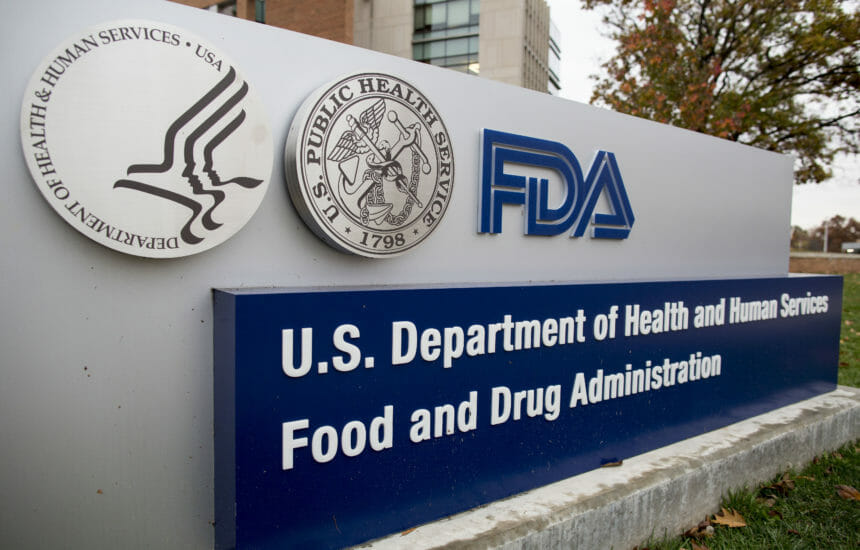Amid ongoing media and PR blunders, the Food and Drug Administration is reportedly eyeing a change in strategy.
Last week, Politico reported that the agency was seeking to bring in a media-savvy public health expert to better articulate its messaging going forward. The need was obvious after yet another series of missteps, including a failure to quickly and decisively address the ongoing baby formula shortage and a delay in publicly responding to the reversal of Roe v. Wade.
It was initially reported that Dr. Vin Gupta, a pulmonologist and frequent guest on TV talk shows, was the top contender for the new role. Yesterday, Gupta reportedly took himself out of consideration for the post, leaving the FDA with egg on its face once anew.
As the FDA ponders its next steps, several PR leaders weighed in on effective high-level communication strategies for government agencies, the importance of timely messaging and ways to combat misinformation.
Red Banyan CEO Evan Nierman said that, despite the FDA’s miscues, the federal government and its agencies have improved their communication with consumers who increasingly get their news from a variety of nontraditional outlets. But that evolution in media consumption means the FDA needs to communicate more openly and frequently than it once did.
“It’s no longer sufficient to just release information or sit for an interview periodically. You have to be pushing information out from highly credible sources on a continual basis,” Nierman noted. “That’s the best way to overcome a flood of misinformation or disinformation from far less credible sources.”
As for criticisms about the FDA’s slow responses to significant healthcare events, Nierman said they speak to the speed with which the world currently moves – and the need to speed up the “gears of bureaucracy.” He added that the slow responses suggest “a lack of advance planning,” noting that the Dobbs v. Jackson Women’s Health Organization decision was leaked months before it was officially released.
Nierman said Gupta would’ve been great in the FDA messaging job and believes the agency needs to seek out similarly dynamic communicators.
“It’s smart for agencies to be looking for people who aren’t just policy experts, but can deliver information in a way that’s compelling. Because at the end of the day, that’s arguably the most important thing,” he explained. “You could have the best information in the world – but if people aren’t receiving it or walking away with the message that you intend, then you’re failing to fulfill your mandate.”
Marketing Maven CEO Lindsey Carnett said she believes that government agencies like the FDA are trying their best, but seem overwhelmed by the sheer volume of challenges.
“The FDA is dealing with all of these mini-fires and they’re set on protecting consumers. And when the big fires come up, then they face issues with resources,” she explained. “I think government agencies are well intentioned, but they just get hit with everything.”
Carnett also noted the challenges marketing and PR agencies face when contracting with government agencies. While acknowledging that the FDA is currently in the hot seat, Carnett advised the agency to prioritize succinct messaging that focuses on solutions and safety for consumers. She also urged the agency to embrace transparency as a way to combat a deluge of misinformation online.
“There’s so much information out there that’s convoluted by all sides and can be swayed to whatever the opinion is,” she explained. “Short, pithy communication points from the FDA would do a better job of saying, ‘We care most about your safety, we exist to make sure that people are safe.’ When transparency is lacking, or there’s a belief that transparency is lacking, then misinformation and disinformation can take over.”
Hirons CEO Dr. James Parham, a veteran of public-sector communications, noted that trust in government is at near-record lows. This, of course, further complicates the mission for the FDA as it seeks to bolster its image.
Like other federal agencies, the FDA has taken a reactive rather than a proactive approach to communications — much to its detriment, according to Parham.
Parham pressed the embattled agency to leverage its considerable information and insights as part of a more timely and consistent messaging plan. As the world becomes more digital, he said, government authorities must embrace video messaging and social media platforms to expand their reach.
“When you add social media to the mix, you have pandemonium and a pandemic, so I think this is an area that’s going to become a bigger concern,” he said. “Among agencies that have been gun-shy, there’s a sort of hunker-down mentality. It’s a reactive game.”
Listen to a conversation between MM+M’s Marc Iskowitz and Wayne Pines, a former consultant to and associate commissioner for to the Food and Drug Administration, on the agency’s recent PR woes here.








